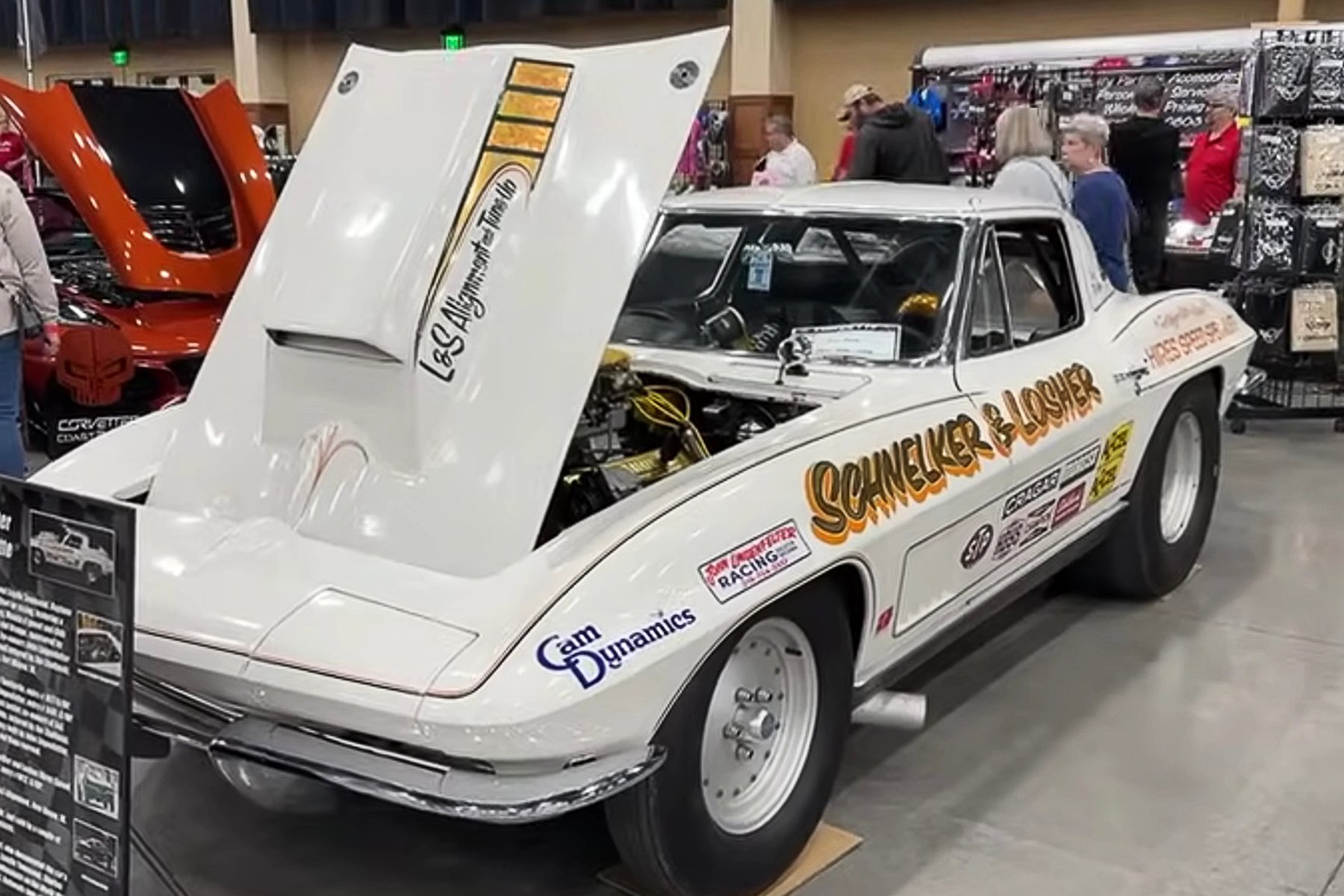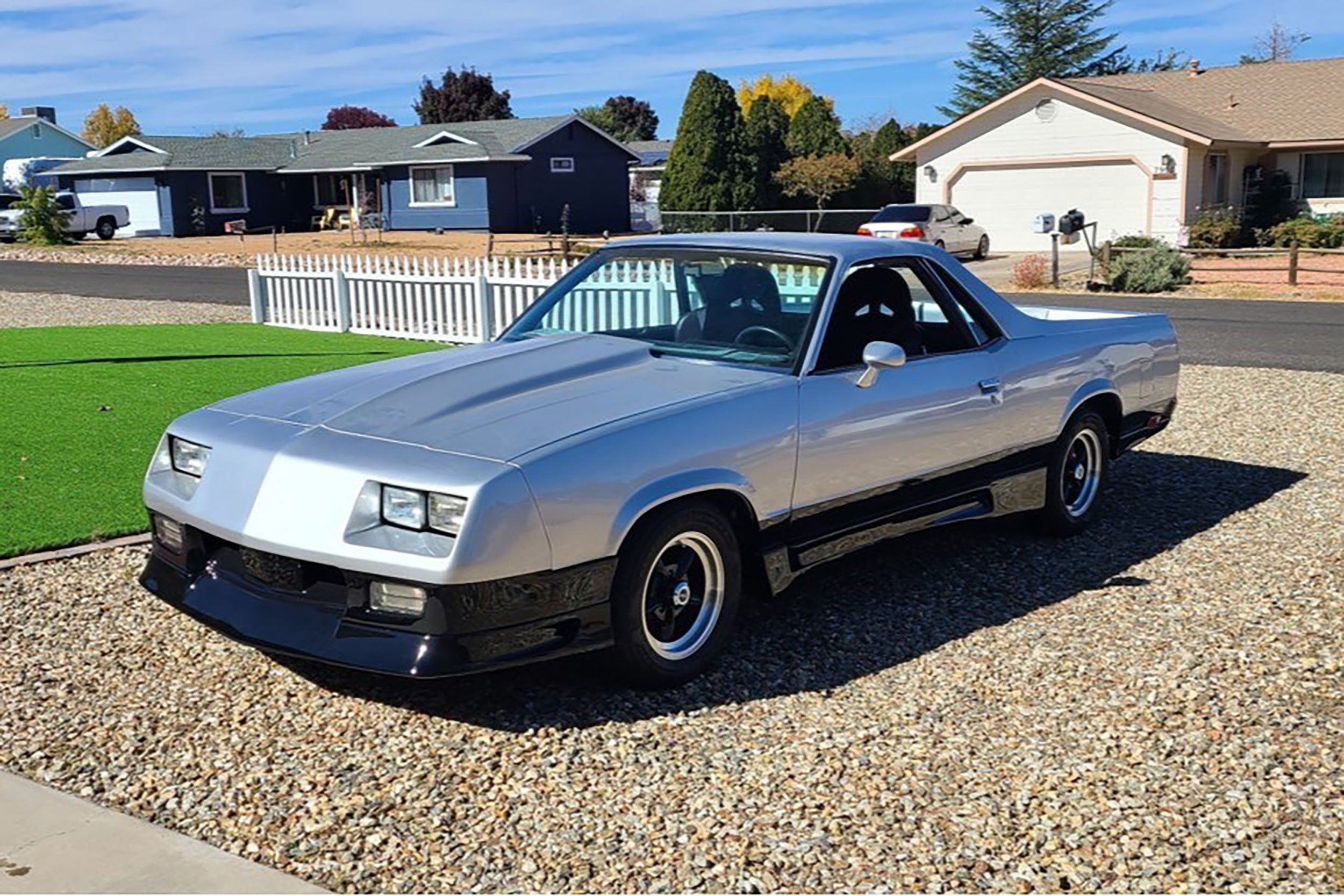I was standing in the staging lanes on a sunny afternoon and listened to a bracket racer brag about how he is on season number five for his drag slicks. My left eyebrow raised as I contemplated the slicks on our own car.
Our Project Rover Camaro (aptly named because we’re teaching an old dog new tricks) still had the same rolling stock that came with its purchase, as I remembered the seller telling me, “They’re like new.” To my defense, I did closely inspect my Mickey Thompson Tire and Wheel (M/T) 31.0/13.0-15 tires at purchase, but the car turned into a total rebuild project during the pandemic, and time got away from us.

Our project Camaro has transformed over the years from an old-school Super Stocker into a more state-of-the-art bracket car. One thing that remains the same is the slicks. Are they still good?
Once our updated Rover hit the track, we focused on tuning the new 489-cube big-block Chevy and related suspension settings. Our result over the first few weekends had the Camaro inching down to a 6.40 e.t. in the 1/8-mile. At this performance point, we saw the e.t. slips fluctuate, and all variances were observed in the 60-foot times.
I wanted to know if our current tires could appear OK on the outside but still have underlying problems. So, I sought some advice from Jason Moulton at M/T.
First Impression
“It’s not as simple as looking over the surface of the slicks or their manufacture date on the sidewall,” Moulton confirms. “Age, use, power, and many other factors determine a set of slicks’ lifespan. Watching the tires closely at launch can inform us far better than many other means.”
With that, our goal was to get some images and observe how these tires were reacting from launch to beyond the 60-foot mark. Yes, I took my good DLSR cameras, but I also want to tackle this project as any typical racer would, by recruiting family members and their cell phones while my son flogged the Camaro on test-and-tune days.
Our slicks were inconsistent in the first 60 feet of our passes. With the naked eye, it was tough to spot what a cell phone camera can take as a "burst group" of images. The slicks were hitting at launch (A), unloading (B), then re-engaging (C.) All this happens in the first 30 to 40 feet of the track.
Never underestimate a quality cell phone as a tool; we each worked to fill our phone’s memory with slow-motion video and quick bursts of still images, all as a diagnostic tool.
Upon sending photos and videos of our current M/T 31×13 ET Drag slicks to Moulton, he had some very interesting observations. His first comment was concerning the slow-motion video. It showed him that the slicks were unloading about four feet out from the starting line — then, they quickly recovered.
Analyzing Our Slicks
My first reaction was to manipulate the front and rear shock settings to compensate for the problem of the slicks unloading, but Moulton had a more experienced recommendation. “If you look at the slicks from the side, the tire is not staying round before it contacts the track. There is a bulge there. So that’s negatively impacting the footprint.”
With that, we ordered replacement M/T ET Drag slicks, and without making any suspension changes, we wanted to see how they performed comparatively. Once new M/T 31×13’s were mounted on our 15×12 Centerline wheels, it was back to the track.
The Mickey Thompson ET Drag slicks are a bias-ply tire design known for their flexibility, as seen in the sidewalls and tire surface. These are still the traditional choice by sportsman racers because of their ability to conform to the track’s surface, giving them their traction reputation. They are the tried-and-true laborer that has served racers well for years.
New Slicks, Different Car Reaction
Our first two passes showed improvement from the 6.41 e.t. at 101 mph run made on our old slicks. Back to the track with new slicks, we immediately put down two 6.36 elapsed times (air-altitude was very similar to previous weekends, so no variable there). These improved numbers again were found in the 60-foot times of our e.t. slips.
Along with our improved time slips, we looked at some fresh slow-motion video footage; the new slicks had less sidewall wrinkling and eliminated the bulging effect of the previous slicks. Also, the tire unloading symptom was gone.

Mickey Thompson’s Jason Moulton provided plenty of assistance when he pointed out that the old slicks were out of round on the front side of the contact surface. This “bulging” was causing the footprint of the tires to be inconsistent,
Chassis Tuning, Not Tire Tuning
For some follow-up test passes, we then took the liberty of experimenting by loosening our front shock extension by two clicks and firming the compression of the rear shocks by one click, which should hit our slicks a little harder. We wanted to see if the tires were repeatable, and our small adjustments changed the car’s action and not the tire’s.
On the following runs with the same tire pressure, the slow-motion video indicated no deflection in the contact face, no elongation of the tire diameter, and still a very even pattern on the starting line surface. Most importantly, the three following test passes pulled off three slips ranging from 6.322 to 6.331 seconds at 104 m.p.h.
This .009-second e.t. repeatability was observed across both the 60- and 330-foot times, and we now have knocked almost .090 second of e.t. off our overall time-slips.
Our old slicks were indicating an even wear pattern and the tread depth was still over 1/10-inch. Needless to say, the camera footage wins in our decision to get new slicks.
Not only did a new set of skins immediately improve Rover’s e.t.’s, but we also proved that we now have quicker and more consistent tires that allow suspension tuning that affects the overall car, not the tires.
Moulton tells us, “What you see there is the new tire staying round. Related to your old tires, when the front end starts to come down, the tire goes from an oblong shape to a round shape, transforming your contact patch. The video with the new tires shows it remaining round throughout the first 60-feet.”
Old vs. New Comparison
During the discussion, it made sense that drag slicks can be worn differently, depending on their use. Our bulging surface could indicate that the tires were “aged out” by overheating on burnouts and/or relying on the wrong air pressure.
“Every bias-ply slick and suspension combination is a little different,” describes Moulton. “Some guys must run lower air pressure than optimum and rely on the tires as part of the suspension. If your car’s suspension geometry is optimum, you can use a comparably higher air pressure in your slicks.”
The sidewalls of our new direct replacement 31x13 M/T ET Drag slicks were more controlled with no sidewall unloading and identical wrinkles at different points of the starting line. Following some shock changes, we made three consecutive passes with less than a hundredth of a second between them.
Bracket Radials, The Next Step
This entirely fresh bracket racing tire design departs from M/T’s extremely popular Pro Drag Radials that are commonplace in heads-up, outlaw-style, DOT-legal, dragstrip competition.
These new Pro Bracket Radial slicks are specifically engineered for bracket racing and are marketed as a fast, reliable, and affordable radial drag slick for the weekend sportsman racer. Their foremost design goal was a line of radial slicks for maximum bracket racing consistency, plus longer life.
Fundamentals Of Radial Drag Slicks
The terms radial and bias-ply describe how the cords and belts comprise the internal tire design. The word “bias” as an adverb means “in a diagonal manner; obliquely; slantingly.” The fundamental of a bias-ply tire is a design with supporting cords running on an angle, crisscrossing from side to side.
Mickey Thomson's ET Drag tires have distinguished looks compared to our old version. The latest Pro Bracket radials are produced in popular bracket sizes and offer critical info on the sidewalls, such as their uniquely developed R1 rubber compound used only on these radials for bracket racing. Plus, markers for directional use, something Jason Moulton instructs should mounted properly and never rotated.
A radial tire has its supporting belts and cords running directly around the tire circumference and at 90 degrees from the centerline from tire bead to bead. This unique design with the M/T Pro Bracket Radial strengthens the sidewall flexibility, yet allows for greater flexibility across the contact surface.
Moulton and I discussed our Camaro as a candidate for continued improvements from these new bracket radial slicks. Regarding design, the M/T Pro Bracket Radial is so specific that Mickey Thompson recommends these tires strictly for automatic transmission applications, which includes most bracket racing competitors.
Preparing For Radial Slicks
With the typical drag slick, you have a soft sidewall combined with lower air pressure to plant that slick to the track surface. With that wrinkling sidewall, you are absorbing horsepower that you ideally want to propel you down the track.
Talking to some racing friends who have embraced the new M/T Pro Bracket Radials with their bracket cars, they offered plenty of recommended starting points. One of their first comments is to forget your bias drag slick tire pressures. One racer currently has a 2,800-pound car that uses 15 to 15-1/2 psi of pressure, while the other with a 3,200 pound has settled at 17 psi.
They both agreed that race car weight is one determining factor, along with fine-tuning the tire pressure for no major wrinkling of the sidewalls. I also received advice from Moulton, who recommends adjusting radial slicks in half-psi increments.
Radial and bias-ply drag slicks fundamentally differ by the cords and belt structure within the tire. The radial design adds greater sidewall strength, while the slick's surface better conforms to the track. Side-by-side, you can spot the more rounded edges of the radial compared to the bias-ply design.
No Sidewall Wrinkles, More Performance And Stability
With these strong points, we decided to put them to the test on Project Rover. We are shooting for another performance consistency gain, no matter how much quicker that elapsed time gain may be. On M/T’s Pro Bracket Radial product list, they offer a 31.0/13.5R15 radial slick (P/N: 3373R) that will comparably replace the 31×31 ET Drag bias-ply (P/N:3072) slicks we just flogged with success.
Moulton notes, “You can expect other ancillary benefits such as longer life, less rolling resistance (e.t. gain), and a more repeatable tire down track due to its stiffer sidewall design.”
One of my first thoughts was that this stiffer sidewall could lose traction at the hit. Still, the higher overall increase in tire pressure, the radial cord and belt design, and M/T’s new R1 tire compound provide greater flexibility at the slick surface.
We set the car up for some radial tests. We removed ballast in the trunk and set the tire pressure at 17 psi for our first two test passes.
As we are off to swap into the M/T Bracket Radials, there are some new rules with these slicks; first, absolutely no wheel bead screws. Though beadlock wheels are king, a strong gasket adhesive between the tire bead and the Centerline 15x12 rims is an option at bracket racing horsepower levels. Moulton added that the should be no leakage problems.
Since we hit the tires harder when we adjusted the shocks for the new bias-ply slicks, I moved the shock settings back to our original setup as a radial starting point by stiffening the front extension and softening the rear slightly.
This test session would be the last in our area for the season, so we wanted to make a manageable number of changes to the Camaro. Right out of the trailer with the same starting line RPM, the car exhibited two very small sidewall wrinkles, but more importantly, it hooked and put down a 6.28 e.t. in the 1/8-mile.
Fine Tuning M/T Bracket Radials
With a half psi increase in pressure in the radials, we saw zero sidewall wrinkle, hooked well, and pulled off our best e.t. ever at 6.212 seconds at 107 mph. We took a short breath and smiled over the overall improvement from a 6.40 to a 6.212 — almost two-tenths of a second and six miles-per-hour with strictly tire improvements.

I could show many different starting line images, but they are all identical. With 17-1/2 psi, there were no wrinkles, just repeatable performance pass after pass. My son and I were both amazed at the difference in stability at the top end. You really can’t appreciate the difference until you have driven both bias-ply and radial slicks
We enjoyed the remainder of the day, making repeatable laps to wrap up Project Rover for 2023. Our plan for 2024 is to update shocks and adjust our ladder bars to raise the instant center of the Camaro’s suspension geometry. With the Camaro now reacting to suspension changes, we are confident we have a tunable chassis without tire inconsistencies. We will kick off 2024 as part of the “radial guys” with the 31.0/13.5R15 Pro Bracket Radials.
The bottom line is that I am grateful to have listened to the assistance from the professionals at Mickey Thompson Tire and Wheel rather than the old-time racer who is proud of his aged slicks. A famed quote says, “It’s still magic even if you know how it’s done.” Let’s go whip some magic on that old dude in 2024.

















